Transferts monétaires et mobilité humaine
Les transferts monétaires sont souvent utilisés lors de crises afin de répondre aux besoins des personnes migrantes. Dans cette page, vous trouverez des ressources sur les transferts monétaires et la migration.

La Croix-Rouge se prépare à fournir une aide humanitaire aux migrant·es de la caravane sur le point de quitter le Honduras pour le Guatemala.
©Johannes Chinchilla / FICR.
Conflits, crises économiques et catastrophes sont autant de raisons ayant contraint des personnes à fuir et à traverser des frontières dans des conditions éprouvantes et risquées, en quête de sécurité et de moyens de subsistance. En 2020, le nombre de personnes déplacées de force s’est envolé au niveau sans précédent de plus de 80 millions de personnes, soit près du double du nombre enregistré il y a une dizaine d’année. Cette tendance s’aggrave et les effets du changement climatique menacent de déplacer jusqu’à 200 millions de personnes d’ici 2050.
L’assistance monétaire est de plus en plus utilisée afin de répondre aux besoins des personnes en situation de déplacement. On y a eu recours à grande échelle dans différents contextes de migration, en Europe en 2015 jusqu’au Venezuela pour « los caminantes ». Elle a également été utilisée dans d’autres crises migratoires, notamment en Amérique centrale, au Sahel, en Méditerranée et dans la Corne de l’Afrique. L’assistance monétaire est à l’heure actuelle l’une des principales formes d’aide apportée aux populations déplacées en Ukraine et dans les pays voisins.
Il existe une myriade de perspectives et de définitions concernant le mot « migrant·e » et la façon dont les humanitaires doivent agir. C’est pourquoi nous ne choisissons pas une définition unique pour le moment, étant donné que les discussions sur l’assistance monétaire et la migration en sont encore à leurs prémices et que le langage évolue encore.
Documenter et partager les données probantes donnera lieu à des interventions plus efficaces. Cette page contient une sélection de ressources utiles concernant la migration et le recours à l’assistance monétaire. Elle sera mise à jour au fil des discussions ayant lieu dans les espaces humanitaires des transferts monétaires.
Priorités actuelles
Afin de contribuer aux progrès relatifs à cet enjeu, nous nous engageons à :
- soutenir la création de données probantes aux niveaux régional et mondial ;
- contribuer aux solutions pratiques visant à mettre en œuvre les transferts monétaires auprès des personnes migrantes ;
- organiser des discussions sur les enjeux majeurs basées sur des données probantes.
Contenu récent

CVA for Protection: A Mapping of IRC’s Use of Cash and Voucher Assistance to Help Achieve Protection Outcomes
Guidelines and Tools
The IRC first began to integrate cash into protection programs in 2013, leveraging the flexibility of CVA to support clients living in urban refugee contexts in the Middle East. Since then, IRC has rapidly expanded its use of CVA to help achieve protection outcomes. This scale-up has come with important...

Impact Assessment for Cash for Education Project funded by DGECHO in Egypt
Report
The overall objectives of the Impact assessment were: To measure the impact of cash on the girls and boys by DGECHO funded project. To measure the impact of cash on Education and protection through a gender lens to investigate considerations of power dynamics in the households Understand the good...

Consultation on Cash and Voucher Assistance to the Main Spanish NGOs Funded by Aecid – Executive Summary
Report
This executive report summarizes the results obtained from a study of the cash and voucher assistance (CVA) practices of eight Spanish NGOs in the field of humanitarian assistance. You can read the full report in Spanish here.
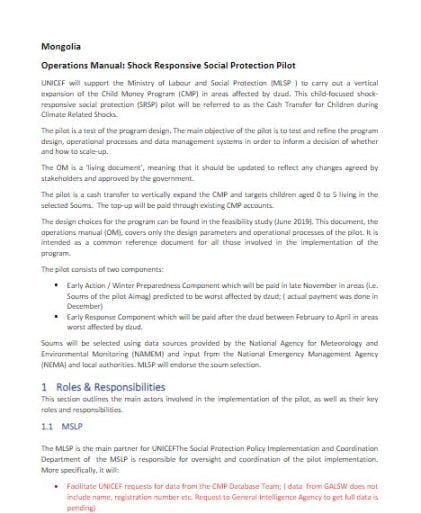
Operations Manual: Shock Responsive Social Protection Pilot
Guidelines and Tools
The pilot is a test of the program design. The main objective of the pilot is to test and refine the program design, operational processes and data management systems in order to inform a decision of whether and how to scale-up.
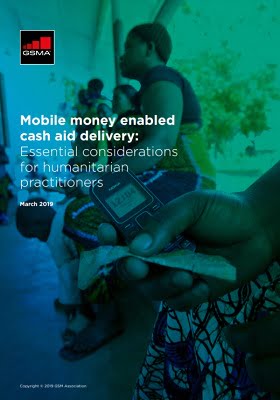
Mobile money enabled cash aid delivery: Essential considerations for humanitarian practitioners
Guidelines and Tools
This report offers guidance for humanitarian practitioners considering mobile money enabled cash and voucher assistance (CVA) programmes. It provides a foundational understanding of the design of mobile money systems for CVA, the benefits they offer relative to other common CVA delivery mechanisms, and...

Harmonising registrations and identification in emergencies in Somalia
Report
The study reveals that the collection of registration and identification data in Somalia is governed mainly by policies, guidelines and standard operating procedures developed by humanitarian agencies. Before collecting registration data, most humanitarian agencies select recipients through a two-step...

The Gendered Dimension of Multi-Purpose Cash Supporting Disaster Resilience
Report
In 2017, in response to the mounting humanitarian crisis in Yemen, CARE Yemen and Action Contra la Faim (ACF) implemented a cash transfer program and community asset rehabilitation and skill building programing in the governorates of Abyan and Amran. This European Union (EU)-funded program integrated...
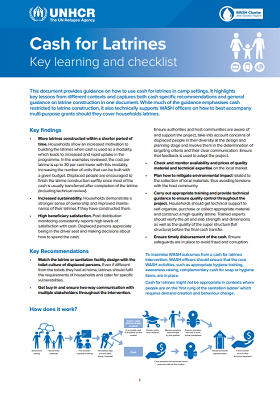
Cash for Latrines
Guidelines and Tools
This document provides guidance on how to use cash for latrines in camp settings. It highlights key lessons from different contexts and captures both cash specific recommendations and general guidance on latrine construction in one document.
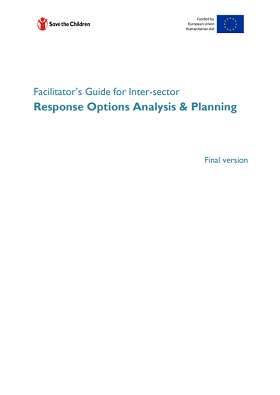
Response Options Analysis Planning Guide
Guidelines and Tools
The inter-sector Response Options Analysis and Planning (ROAP) is a structured decision-making process, which draws from the information generated through a multitude of needs and operational environment assessments. The ROAP gives way to the selection of the most appropriate, operationally feasible and...
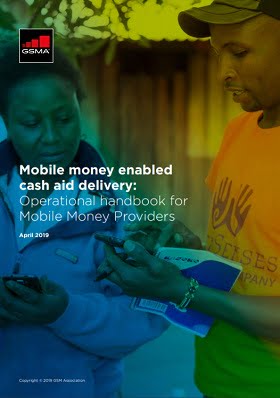
Mobile money enabled cash aid delivery: Operational handbook for Mobile Money Providers
Guidelines and Tools
Section 1 of this handbook provides essential background on the humanitarian sector and cash and voucher assistance (CVA) programmes. A brief overview of the business case for CVA delivery identifies the potential revenue streams that can come from building long-term strategic partnerships with...
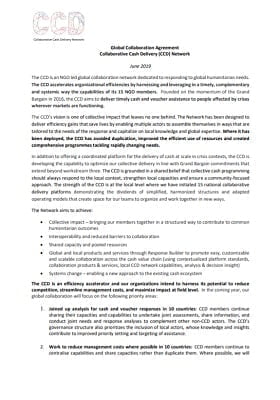
Collaborative Cash Delivery (CCD) Network Global Collaboration Agreement
Guidelines and Tools
The annual meeting of the Grand Bargain (GB) – a facilitation group made up of global humanitarian leaders from Sweden, the US, OCHA, UNICEF, IFRC and InterAction – held on 27th June saw the presentation of a letter of intent endorsed by the CEOs of the Collaborative Cash Delivery (CCD) Network...

Harmonising registrations and identification in emergencies in Somalia – Briefing
Report
This briefing highlights the benefits, risks and challenges associated with establishing an integrated data system for cash transfer programming (CTP), based on the findings of a study that examined how different humanitarian agencies in Somalia are managing the collection, analysis and sharing of...

Mitigating Risks of Abuse of Power in Cash Assistance in Iraq
Report
This document outlines lessons learned from a joint UNHCR/WFP project in Iraq aimed at identifying and mitigating the risks of abuse of power in cash assistance. The cash transfer mechanisms reviewed during the
project include mobile money, e-vouchers and cash delivered through money transfer agents.

Tripartite Agreement Template Between Government, Partner And Financial Service Provider For Provision Of Financial Assistance To Beneficiary Accounts
Guidelines and Tools

Analyse des dynamiques sociales et des pouvoirs des parties prenantes pour la mise en place de Transferts Monétaires à Usage Multiple (TMUM) pluriannuels au Nord Mali
Rapport
Six ONG internationales (Action contre la Faim, Danish Refugee Council, Handicap International, International Rescue Committee, Oxfam et Solidarités International) ont mis en place un programme de transferts monétaires à usage multiple au Mali ; la deuxième phase de cette intervention de filets...

Minimum Expenditure Basket Harmonization Guidance
Guidelines and Tools
The present Minimum Expenditure (MEB) Guidance is an operational tool for the Refugee Response to inform humanitarian multi sector and/or multipurpose cash assistance to meet food needs and a broader set of essential needs of refugees in Uganda.
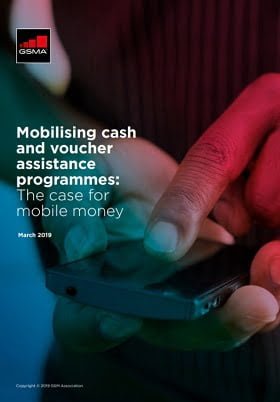
Mobilising cash and voucher assistance programmes: The case for mobile money
Guidelines and Tools
This report offers recommendations for both humanitarian organisations and mobile money service providers regarding the partnerships required to enable effective and efficient use of mobile money in humanitarian contexts.

Cash for Work (CFW) Guidance Note
Guidelines and Tools
Cash for Work interventions provide employment to unskilled and semi-skilled workers on labour intensive projects such as rehabilitation of irrigation systems, soil conservation, and road construction and maintenance.

MEB Interim guidance document (Kenya)
Guidelines and Tools
The recent years of humanitarian responses in Kenya has seen the use of Cash and Voucher Assistance (CVA) increasingly being adopted in various interventions and across sectors by both the state and Nonstate actors. This is because besides being cost effective, CVA enables recipients of humanitarian...

Le ciblage dans les systèmes de protection sociale : étude comparative sur deux méthodes
Rapport
Les filets sociaux sont en train de devenir un instrument clé des politiques visant une réduction de la pauvreté en Afrique sub-saharienne et constituent un élément de base des systèmes de protection sociale qui incluent la protection sociale adaptative. Les systèmes de protection sociale visent à...